Coffee lovers would not allow me to lie; a warm cup of freshly brewed coffee can make your mornings delightful. Isn’t that true? But behind each cup of coffee, there is a journey. Let’s start exploring that journey by entering the fascinating world of coffee harvesting.
In this article, we will discuss the coffee harvesting basics. That includes topics such as altitude, climate, picking, seasonality, quality control, sorting, and much more.
I promise it will be fun. So, keep reading to pump up your coffee connoisseur level.
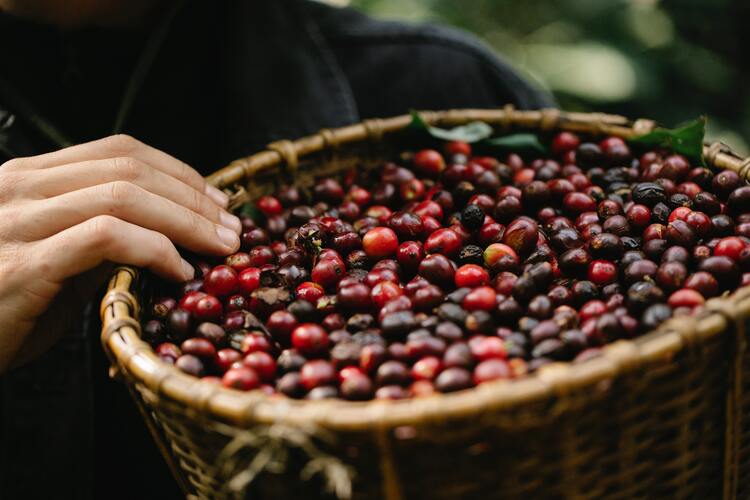
Coffee Harvesting Basics
Altitude and Climate Influence
When harvesting coffee, altitude and climate play a significant role in the quality and flavor of the beans. In general, higher altitudes produce coffee with more acidity and complex flavors. The ideal altitude for growing coffee beans ranges between 1,000 and 2,300 meters above sea level (3,300 and 8,000 feet).
The climate also affects the coffee harvest; a moderate temperature of 18-24°C (64-75°F) and consistent rainfall are essential for the proper growth of the coffee fruit. It’s important to remember the following factors:
- Higher-altitude coffee trees need a longer time to develop and make the fruits ripe
- Ripening is slower in colder environments, which leads to an increased accumulation of sugars and acids in the beans.
- Arabica coffee trees prefer cooler temperatures, while Robusta trees adapt more quickly to warmer climates.
Arabica vs. Robusta
There are two main types of coffee beans: Arabica and Robusta. Each has its distinct characteristics, which greatly influence its flavors and aromas.
Arabica
- Traditionally grown at higher altitudes (above 1,000 meters)
- More sensitive to temperature and climate changes, requiring a cooler and more stable environment
- More delicate and nuanced flavors, often with fruity and floral notes
Robusta
- Thrives at lower altitudes (below 1,000 meters)
- More resistant to diseases, pests, and temperature fluctuations
- Stronger, more robust flavor and higher caffeine content
During the coffee harvesting process, picking ripe, high-quality beans is crucial, as their maturity will significantly impact the final taste of your coffee. To ensure that only ripe coffee fruits are collected, attention is paid to these characteristics:
- Firm texture
- Uniform color, ranging from red to deep purple
- A slight sweetness when tasted.
Post-harvesting, the processing of coffee beans will also determine the outcome. There are three primary methods for processing coffee fruits:
- Dry (natural) process
- Wet (washed) process
- Honey (pulped natural) process
Each method will yield a different flavor profile in the final coffee product.
Read More: Coffee Processing Methods
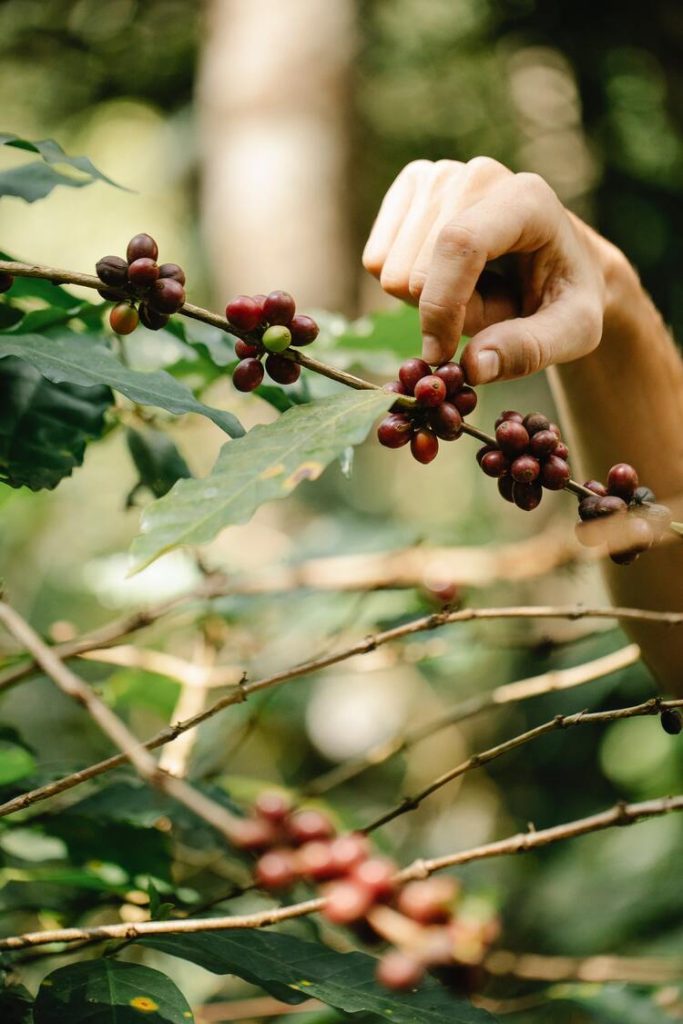
Coffee Harvesting Methods
When it comes to harvesting coffee, there are three primary methods that you’ll encounter: Selective Picking, Strip Picking, and Machine Harvesting. Each method has advantages and drawbacks, depending on factors like farm size, budget, and the quality of the desired coffee beans. Let’s dive into each method to discover its nuances.
Selective Picking
Selective Picking is the most labor-intensive method of harvesting coffee. Farmers will handpick only the ripe coffee cherries in this method, leaving the unripe ones on the plant for future harvesting. This ensures that the harvested coffee beans will be of the highest quality and uniformity. Some advantages of Selective Picking include:
- Quality: This method obtains the highest quality beans since only ripe cherries are picked.
- Less waste: Fewer cherries are thrown away because you pick only the ripe ones.
However, Selective Picking also has some drawbacks:
- Labor-intensive: This method requires a lot of labor, making it costly.
- Time-consuming: As farmers are selective, the process can take longer than other methods.
Strip Picking
Strip Picking is a faster method for harvesting coffee compared to Selective Picking. In this method, all the cherries from a branch of the coffee plant are removed at once, regardless of their ripeness. This can be done either by hand or using a simple tool. Some benefits of Strip Picking include:
- Efficiency: It’s quicker than Selective Picking because all cherries on a branch are harvested simultaneously.
- Less labor: Strip Picking requires fewer workers, which can save money.
There are also some disadvantages to Strip Picking:
- Mixed quality: This method can result in a mix of ripe and unripe cherries, impacting the overall quality of the harvest.
- Waste: Unripe cherries must be discarded later, which could lead to waste.
Machine Harvesting
Machine Harvesting is the most efficient and least labor-intensive method for harvesting coffee. With this method, specialized harvesting machines that shake the branches of the coffee plants are used, causing the cherries to fall onto a collecting platform. Some advantages of Machine Harvesting are:
- Speed: This method is significantly faster than both Selective and Strip Picking.
- Labor-saving: Fewer workers are required when you use machines.
However, Machine Harvesting also has its drawbacks:
- High upfront cost: Purchasing and maintaining the machinery can be expensive.
- Unsuitable for uneven terrain: Some farms with uneven terrain might struggle to use machines effectively.
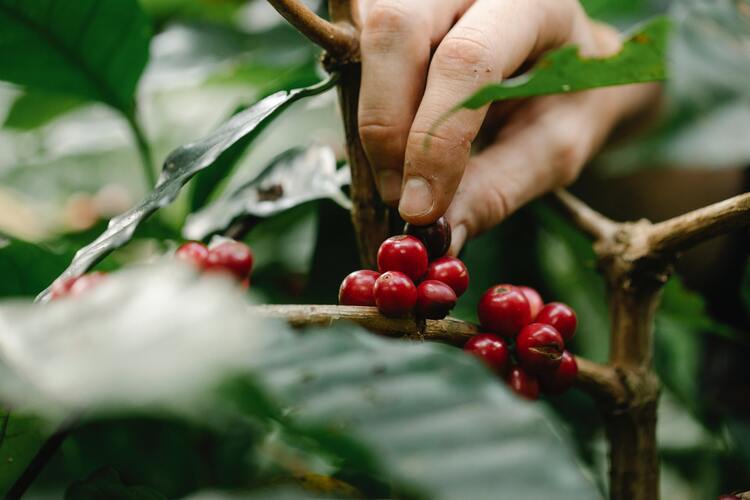
Coffee Harvesting: Seasonality and Regions
When it comes to coffee harvesting, seasonality plays a crucial role in determining the quality and quantity of the coffee produced. The coffee growing regions of Brazil, Colombia, Africa, Ethiopia, and Kenya experience different climates and environmental factors, which consequently affect their coffee harvests.
In Brazil, the largest coffee producer globally, the harvest season typically runs from May to September. However, the actual time of harvest will depend on the region. For instance, the Minas Gerais region, responsible for most of Brazil’s coffee production, has its harvest in June and July. Keep in mind that weather conditions like rainfall, humidity, and soil conditions significantly impact the success of the Brazilian coffee harvest.
Colombia, another major coffee-producing country, has two distinct seasons for coffee harvesting. The primary harvest in the mountainous regions usually occurs between October and January, while the secondary harvest occurs between April and June. This results in a consistent supply of fresh Colombian coffee beans yearly.
African coffee-producing countries like Ethiopia and Kenya also have varied harvest seasons. In Ethiopia, the birthplace of the arabica coffee plant, the season generally starts in October and ends in December. Ethiopian coffee is highly prized for its unique flavors, primarily due to its altitude, rainfall pattern, and mineral-rich soil.
Kenya, known for its rich and bold coffee beans, has a harvest season that spans from November to December for its main crop, with a secondary crop, known as the fly crop, harvested between June and August. The double harvest is due to the country’s bimodal rainfall pattern, which allows for two full growing periods each year.
As you can see, there’s a wide range of coffee seasonality across these regions, each providing unique flavors, aromas, and characteristics. This is why coffee growers are vigilant in monitoring their local weather conditions and adjusting their farming and harvesting techniques accordingly.
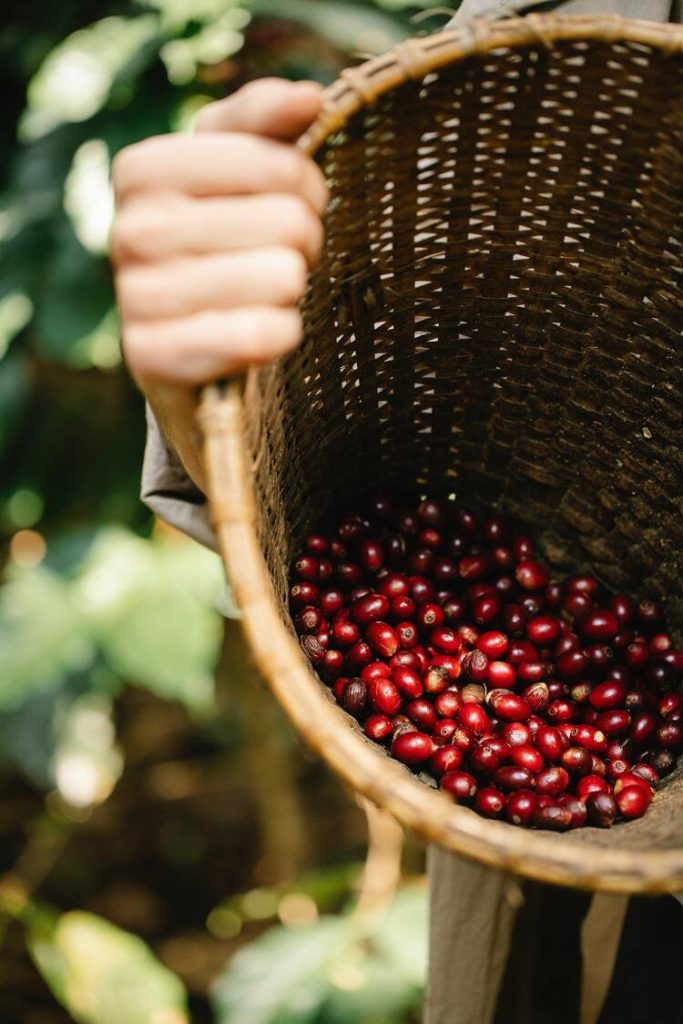
Quality Control, Sorting, and Grading
As we venture into coffee harvesting, one essential aspect to consider is the quality control and grading of beans. This process helps determine the overall quality and taste of coffee.
As we have discussed, quality control starts when coffee cherries are picked. Irrespective of the picking method, only the ripe cherries move on to the next step. This ensures the bean within the cherry has reached the proper maturity.
Then, ripe cherries go through a sorting process. Size tends to be the most important factor when choosing a sorting method since size uniformity is desired to maintain consistency in roasting and brewing.
Beans can be graded/sorted using the following categories:
- Extra Large: 19+ mm
- Large: 17-19 mm
- Medium: 15-17 mm
- Small: 13-15 mm
- Extra Small: under 13 mm
Size is not the only factor taken into consideration. Other sorting methods include:
- Density sorting is a technique to separate coffee beans based on density or weight. Beans with different densities can have distinct flavor characteristics and roasting requirements. Density sorting machines use airflow or water flotation systems to classify the beans into different groups. This method helps eliminate lightweight or damaged beans, ensuring a more consistent and flavorful cup of coffee.
- Altitude Sorting is used to keep track of the elevation where the coffee cherries were harvested. Coffee cherries grown at higher altitudes generally have a more complex flavor profile due to slower growth rates.
- Optical sorting employs advanced technology to sort coffee beans based on their visual appearance. High-resolution cameras and sensors detect and remove defective beans, foreign objects, or discolored beans. This method can identify and eliminate beans with insect damage, black beans, or other visual imperfections that could affect the overall quality of the coffee.
- Electronic sorting utilizes electronic sensors and detectors to sort coffee beans based on their properties, such as color, size, shape, and texture. These machines can quickly and accurately identify and remove beans that do not meet the desired specifications. Electronic sorting can be customized to target specific defects or impurities, providing efficient and consistent results.
Keep in mind more than one sorting method can be used. For example, beans can be kept separate by altitude and sorted by size. Many premium specialty coffee makers utilize a strict hand-grading system that considers size, shape, color, and defects.
After harvesting and sorting, coffee cherries are ready for the next steps in the production process. If you want to keep learning about coffee production, I recommend reading our articles on these topics.
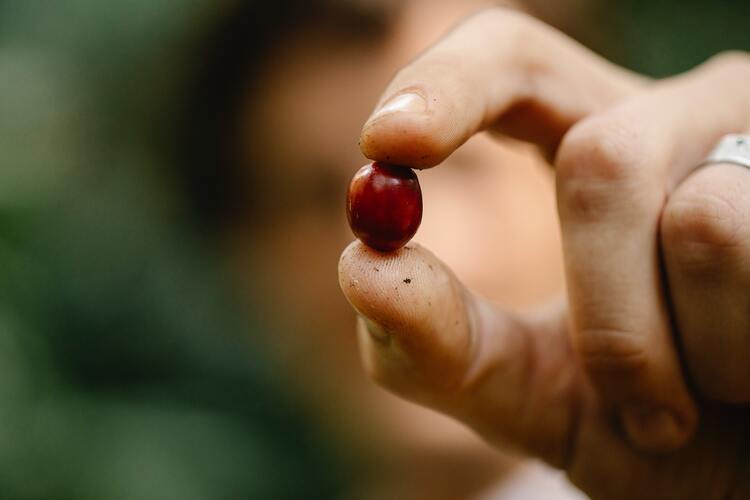
Frequently Asked Questions
When does the coffee harvesting season occur?
Coffee harvesting season varies depending on the region. Generally, it occurs during the dry season, as the cherries need to be dry before they can be processed. In some countries like Brazil and Colombia, the harvest occurs between April and September, while in Central America and Mexico, it’s typically between October and March.
What are the indicators that coffee cherries are ripe and ready for harvesting?
Depending on the variety, ripe coffee cherries will have a bright red or yellow color. They will also be plump and firm to the touch. Harvesting only the ripe cherries is essential, as unripe ones can affect the overall flavor of the coffee.
What is the difference between selective and strip picking?
Selective picking refers to hand-picking only the ripe cherries, which ensures that only the highest quality cherries are harvested. Strip picking involves removing all the cherries from a branch, regardless of ripeness. This method is faster but often results in a mix of ripe and unripe cherries.
What role does hand-picking play in quality coffee harvesting?
Hand-picking allows for a more precise selection of ripe cherries, resulting in higher-quality coffee. It’s also less damaging to the coffee plants, as the pickers can carefully pluck the cherries without harming the plant. This method is standard in regions known for producing premium coffee.
What are the immediate next steps after coffee cherries have been harvested?
After harvesting, it’s essential to process the cherries quickly to prevent spoilage. Processing steps include depulping (removing the outer skin), fermentation (removing the mucilage), and drying the coffee beans. Once dried, the beans are then sorted, graded, and stored for further processing.
What are the challenges faced in the coffee harvesting process?
Labor and timing are key challenges in coffee harvesting. Since the process often involves hand-picking, it’s labor-intensive and requires a skilled workforce. Ensuring that cherries are harvested at peak ripeness is essential for quality, making the harvest timing crucial. Additionally, unpredictable weather and pests can threaten the crop’s yield and quality.
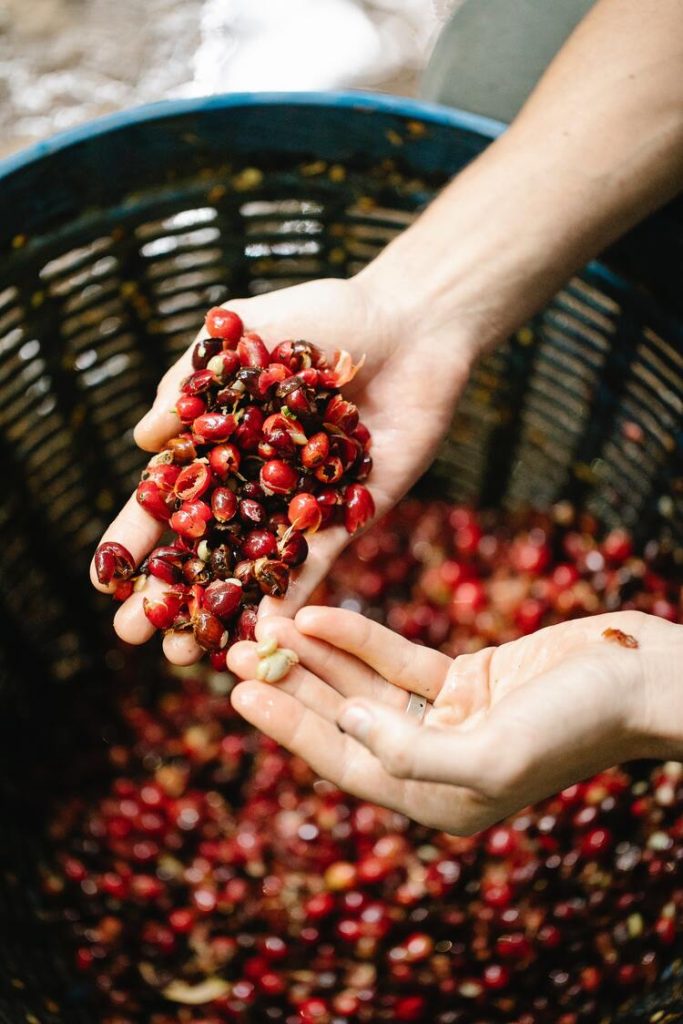
I hope you have enjoyed the article and learned something new! Until next time, keep brewing!
Tell me, how much did you know about coffee harvesting?